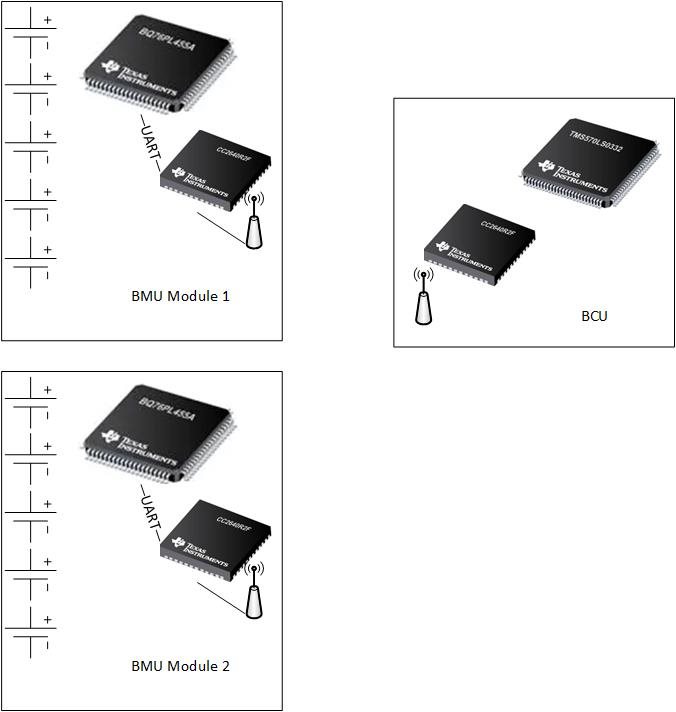Other Parts Discussed in Thread: CC2640, CC2640R2F
Hi, we are planning to design a wireless BMS with bq76PL455 and CC2640. In the design, instead of using daisy chain communications between bq76PL455, CC2640 bluetooth will be used. Also there will be a master unit that is not seen in the figure. What am I asking is this a good solution? Do you have any experience on this. Kind regards




